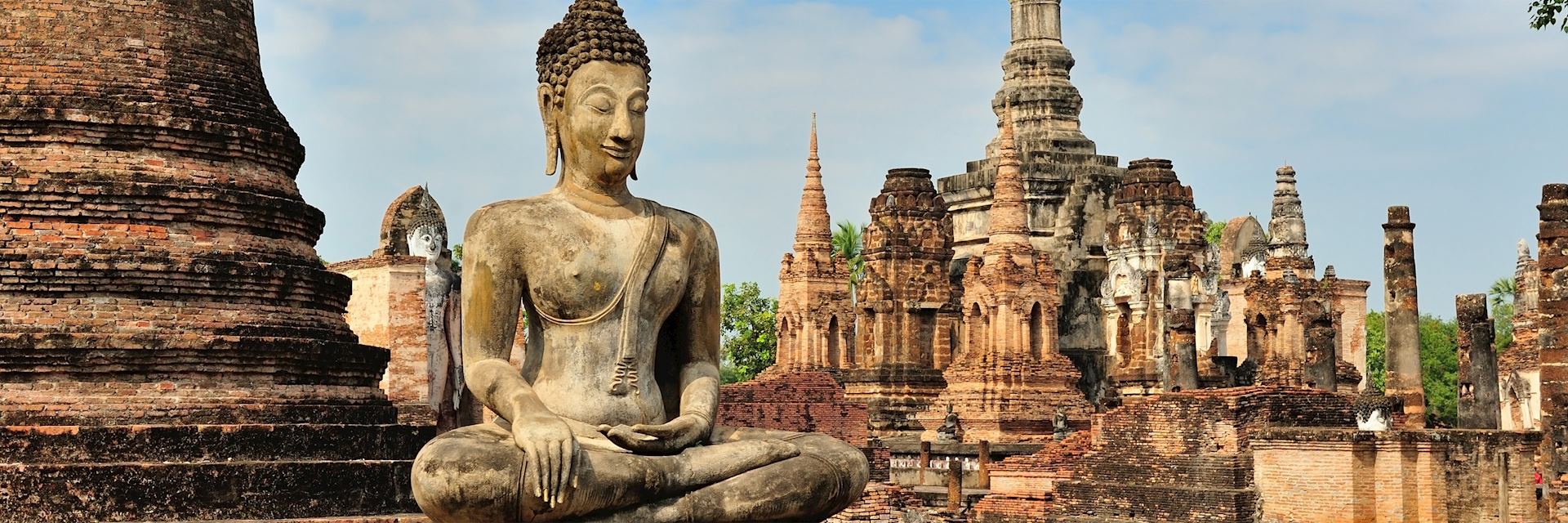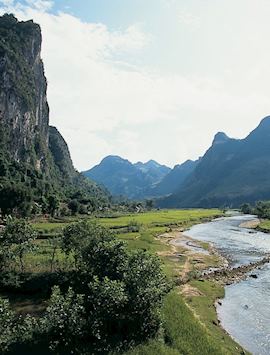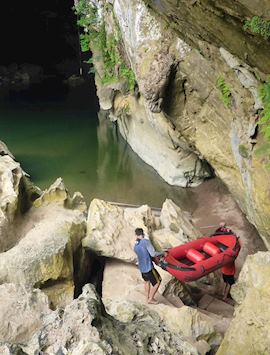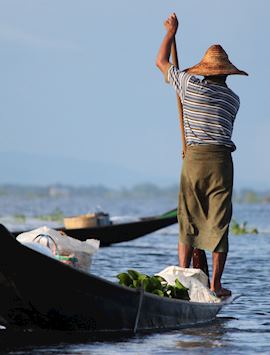The jigsaw of nations across Southeast Asia allows you to combine countries, cultures and experiences with ease. To explore the region thoroughly you’d need months or even years, so we’ve picked out four trips that, in about two weeks, give an insight into a pocket of the subcontinent.
Each country pairing offers something a little different, along both the well-known routes and lesser-trodden paths. These journeys are by land or river, giving you time to stop off at remote Khmer temples, rarely visited national parks — or simply try a cup of rice whiskey along the way.

Cambodia and Koh Chang, Thailand by Harriet
For an in-depth tour of Cambodia and a relaxing beachside finish
The ‘must-see’ Cambodian sights tend to be clustered in Siem Reap and Phnom Penh, with visitors predominantly in satellite around the two cities. Undoubtedly, the Temples of Angkor and the stoic capital are significant, but they give just a small impression of the country.
This two-week trip starts in Siem Reap but takes you beyond these attractions, driving south into rural Cambodia, to the trading port of Kampot and the mangrove forests of Koh Kong. This leads you to the Cambodian coastline, which either has very basic (and busy) slices of beach or exclusive private islands.
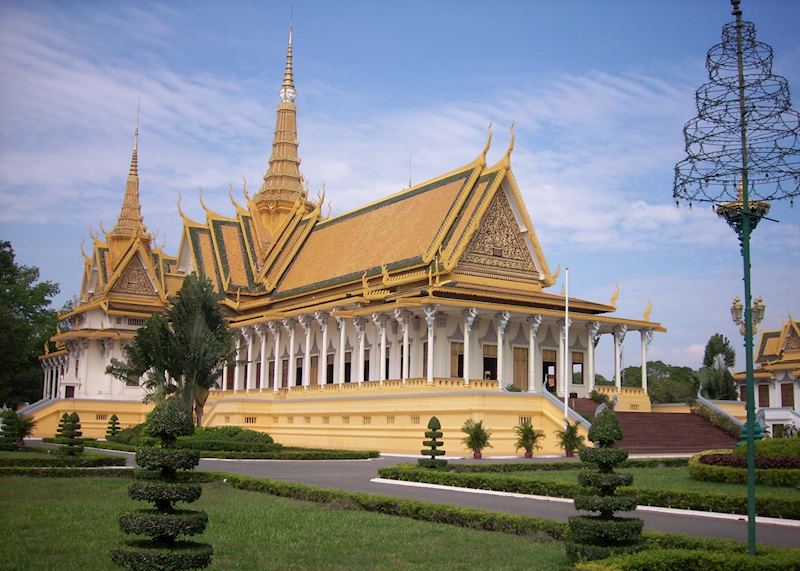

For an ideal beach, drive north along the Cambodian coast into Thailand. Here, you’re a boat ride from the island of Koh Chang. One of Thailand’s largest islands, it’s dominated by Mu Ko Chang National Park, leaving it comparatively undeveloped.
Koh Chang is also easier to get to from Cambodia than Thailand itself, keeping it quiet and the hotels good value. The Dewa, a contemporary property built from local materials, had just the beach I was looking for: a long slip of blonde sand shelving into an aquamarine sea.
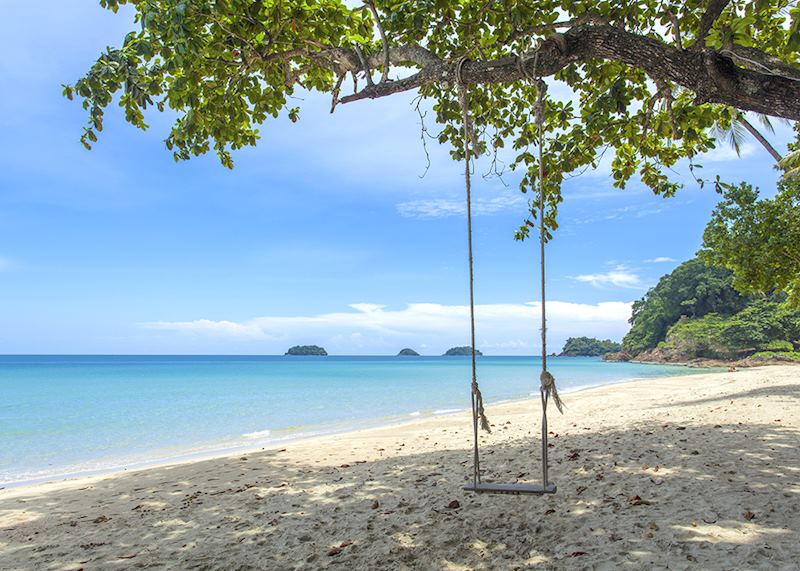
Highlights of the journey:
- Phnom Penh has a burgeoning craft brewery culture. You can take a brewery-focused tour of the capital to meet its entrepreneurial Khmer residents, who are eager to show you their (often innovative) brewing techniques. They’ll invite you to taste everything from heavy stouts to German-influenced pilsners.
- Sitting on the confluence of two rivers, Kampot is a French-colonial town with faded-pastel shophouses and riverside cafes. I joined a guided tour of the area, which took me to pepper farms that have been cultivating the spice since the 13th century.
- Koh Kong is a tract of wilderness that encompasses pristine mangroves, serpentine rivers and the forested Cardamom Mountains. On a curve of the Tatai River, 4 Rivers Floating Lodge allows you to spend time getting to know this remarkable landscape. Kayak directly from your private tent (which floats on a platform above the water) or hike into the virgin rainforest (deemed the second largest in Asia).

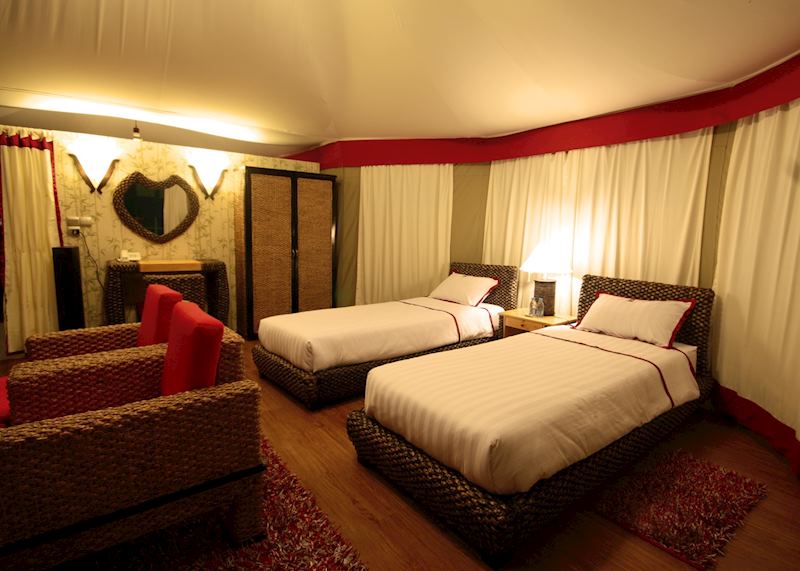
My inside tip
Most people visit Angkor Wat to see sunrise. I suggest heading to a smaller, quieter temple like Banteay Srei, leaving Angkor Wat until the afternoon when the crowds have dissipated. Linger until dusk for a quality of light that makes for excellent photographs.
Northern hills of Vietnam and Laos by Alex
For those looking for a slice of local life and the best scenery Southeast Asia has to offer
If it’s the scenery of Southeast Asia that interests you, and you have two weeks to spare, the mountainous highlands that stretch across the region are at their most dramatic in Northern Vietnam and Laos.
Here, you’ll find a region that seems to eschew international borders. Sheer-walled valleys, impenetrable jungle and rivers dictate travel here (the border crossing itself is unassuming). There are many traditional communities who live in this region, and you’ll find customs and languages that are endemic to each.
I’m recommending a journey from Hanoi, west to Luang Prabang (one of Laos’ larger cities). It takes about three hours to reach the White Tai community of Mai Chau from Hanoi, and it’s here the forested mountains begin to rise on the horizon. As you go west into Laos, you’ll see lots of rural villages springing up from the riverbanks, sheltered by the trees. It’s only when you get to Luang Prabang that city life comes back into focus — albeit a very peaceful one.
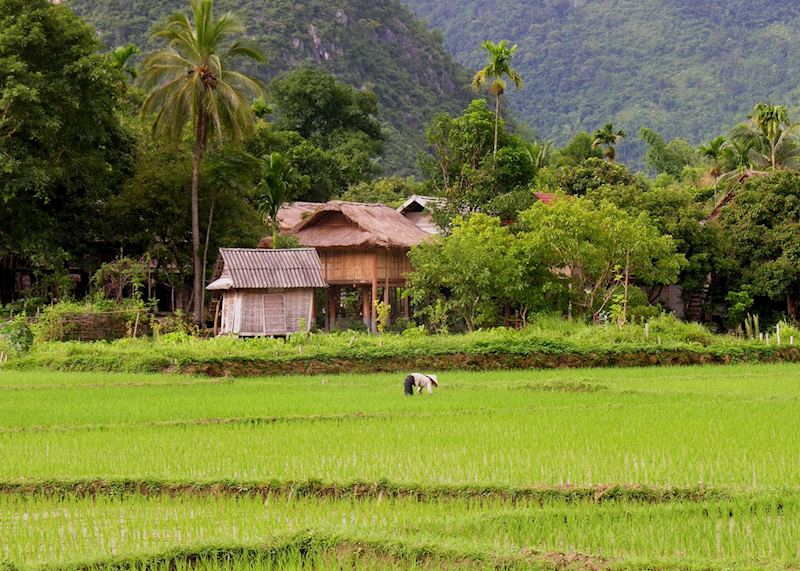
Highlights of the journey:
- Hidden in the greenest valley I’ve ever seen are the Vieng Xai Caves, a subterranean city of caverns and grottoes that were converted into the final headquarters of the Pathet Lao. On a guided tour, you can explore the hospital, chapel and bedrooms where hundreds sheltered from bombing during the Laotian Civil War.
- Just one spindly road encircles the edge of Nam Et-Phou Louey National Protected Area, a massive crumple of forest-covered mountains. The local Khmu people have begun to work with conservationists to offer you a one-night experience in the park. You travel in by longtail boat and, as night falls, float down the river looking up at the stars before spending the night in a traditional bungalow.
- There are ample opportunities to meet traditional communities, such as Akha and Hmong people, on this route. Each have their own distinct architecture, clothing, and traditions. I suggest going with a guide who can help you navigate the language barrier and forge stronger connections during your visits.

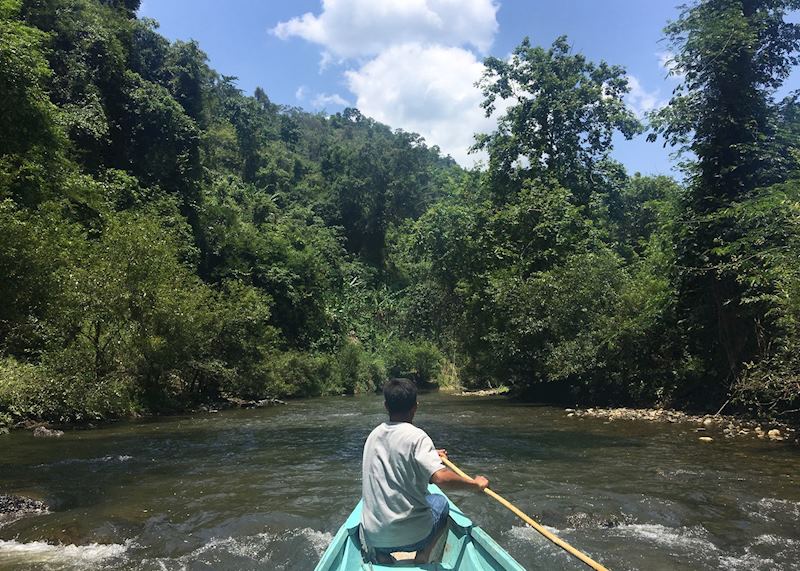
My inside tip
Start in Hanoi with a visit to the Vietnam Museum of Ethnology. This extensive museum will set you up with an introduction to some of the communities you’ll meet later.
Off-the-beaten-track Laos and Cambodia by Heidi
For the next step in intrepid Southeast Asian exploration
I’m often asked by veteran visitors to Southeast Asia to plan them something new. This ten-day trip, which I’ve tried and tested, would fit the bill. It takes you through southern Laos, nudging the Thai border before entering northern Cambodia. Aside from a few determined backpackers, I barely saw any other visitors. I suggest adding on time in Siem Reap to slacken the pace at the end of your journey.
Starting in the Laos capital, Vientiane (which in itself feels like a large town), you get a glimpse of commercial Laos before plunging south into narrow river valleys that cut through limestone hills.
The drives are long and the valleys can feel endless, but you can stop at traditional riverside villages along the way, or take a boat into the yawning mouth of Kong Lor Cave. So unexplored is this region that I was one of the first visitors to camp in Nam Theun National Protected Area, a rich ecosystem of evergreen forest, pine stands, cloudforest, and riverine wetlands.

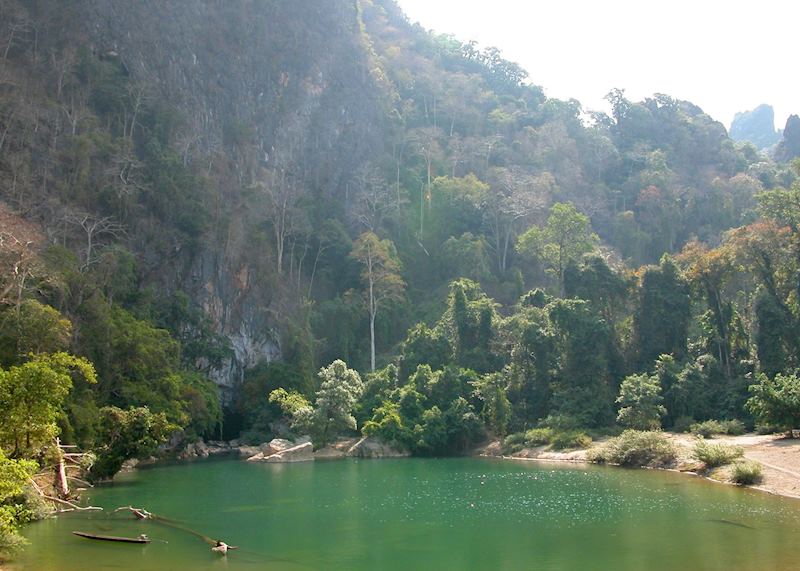
As you continue to drive south, the Laos landscape flattens out as the Mekong and its tributaries thread in. This was once the Kingdom of Champasak, and you’ll see remnants of once-grand temples between wooden-stilted houses and buildings dating back to the French colonial period.
After crossing into Cambodia, you’re a short drive from the border town of Preah Vihear. This 9th-century Khmer complex leads onto the Angkor Road, an ancient trade route you can follow to Siem Reap.
Highlights of the journey:
- In Nam Theun, you enter the park by longtail boat (there are no roads) and stay on a sandy riverbank, with the opportunity to hike through the surrounding deciduous forest. Wat Phou Temple has what I wish Angkor did — barely a visitor in sight.
- The temple runs across a rocky plateau, which looks across Cambodia from one side and Thailand the other. Built to celebrate the Hindu god Shiva, it’s a well-preserved complex of intricately carved sanctuaries linked by a system of staircases.
My inside tip
This isn’t for you if you’re looking for a luxurious journey, but I took real pleasure in the sheer remoteness of SpringRiver Resort, near Kong Lor Cave. Along the banks of a moss-green river are 16 traditional stilted bungalows, where you can sit and watch river life pass by.
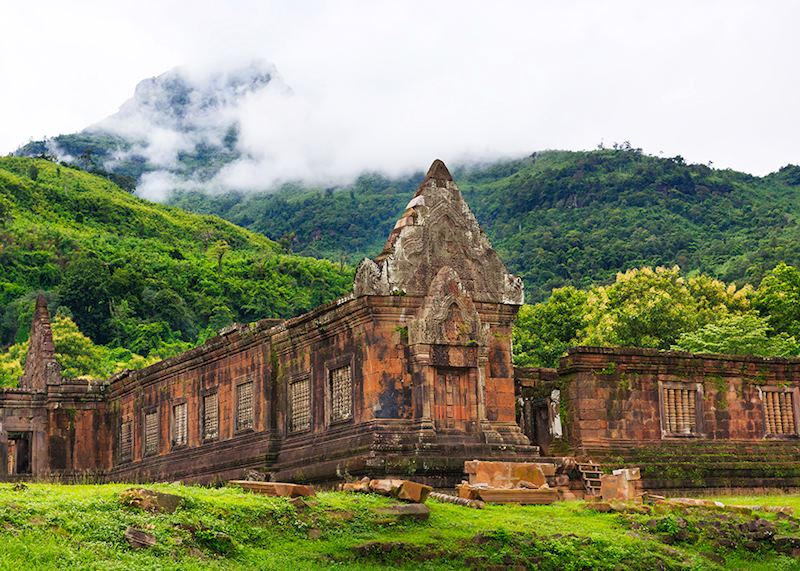
North Thailand and Laos by Alex
For a journey that balances adventure, comfort and authentic cultural experiences
For me, travel is about the journey. It’s true that a network of short flights make travel across Southeast Asia quicker, but if you tackle a route by land the slower pace really allows you to explore.
That doesn’t necessarily mean you have to stay on terra firma. I often plan this two-week trip for people to include a day cruising along the Mekong from the Laos border, stopping to visit villages along the way.
Starting in Chiang Mai in northern Thailand, you can travel northeast to Chiang Rai, where the roads narrow and villages get smaller. It’s a natural progression to continue on to Laos, where, after meandering past stilted houses and rural communities by boat and car, you eventually reach Luang Prabang and return to relative comfort.
The borderlands between Chiang Rai and Luang Prabang are occupied by communities who descend from the Shan, migrants from northern China. As you travel through the region, you’ll happen upon many of these communities, who share a history but have developed very different beliefs and traditions.
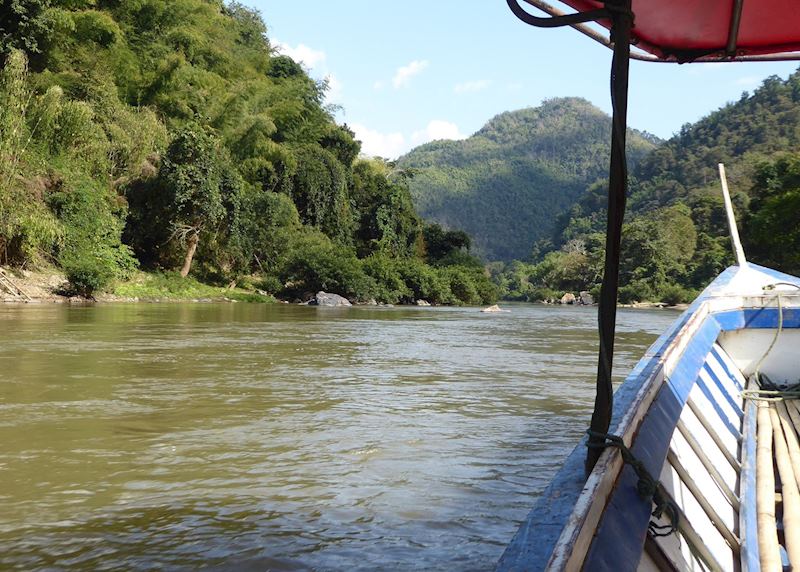
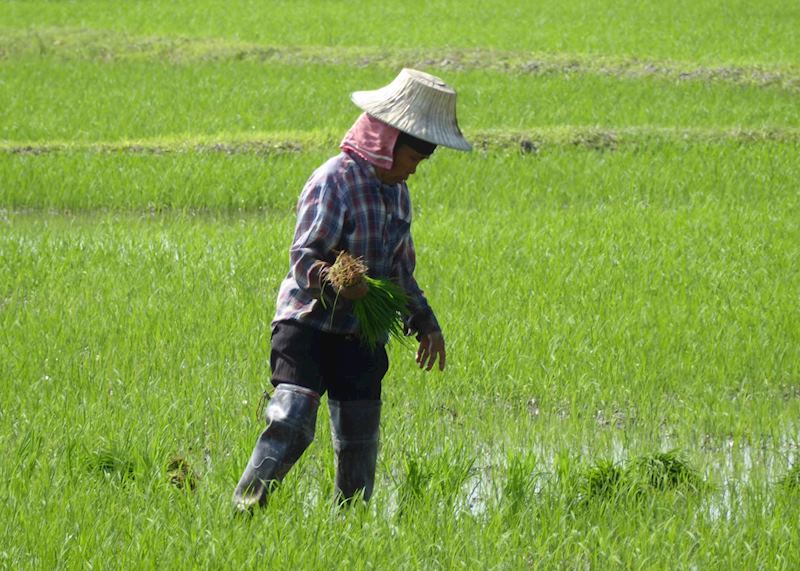
Highlights of the journey
- Cruising the Mekong, you’ll see jungle-clad hills and giant boulders pass by from the teak deck of your boat. The occasional stilted village signals the only development. The boat moors in Pakbeng, where you can spend the night in a riverside lodge overlooking the gingery-brown water.
- There are opportunities to visit many rural communities along the route, from the Tibeto-Burman Lisu in Thailand to the Khmu, the largest ethnic minority in Laos. During my own trip, some Akha villagers showed me their sacred swing, an important cultural item. Each member of the village has a special day when they can swing to their heart’s content, and it’s also used for courting rituals.
My inside tip
After journeying through Laos, you can relax in comfort at Muang La Lodge. Most of the staff are from the local community, and the riverfront guest bungalows have been built using local techniques. There are natural hot springs to soak in as well as an open-air restaurant — I suggest the five-course taster menu.
Read more about trips to Southeast Asia
Start thinking about your experience. These itineraries are simply suggestions for how you could enjoy some of the same experiences as our specialists. They’re just for inspiration, because your trip will be created around your particular tastes.
View All Tours in Southeast Asia
